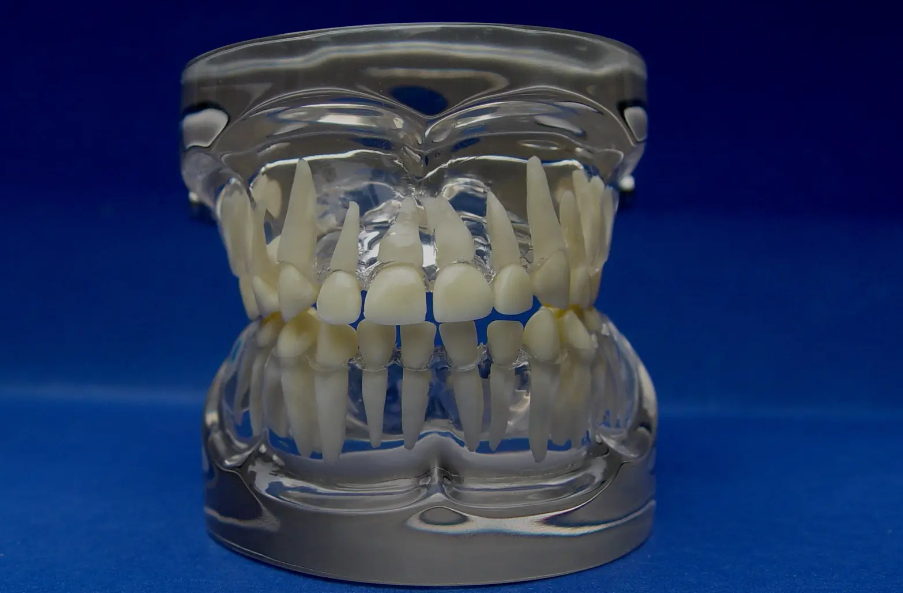
Brushing your teeth well can ward off dementia
Adhering to correct brushing and maintaining oral hygiene can not only prevent tooth decay, help maintain good chewing function and gastrointestinal function, but also prevent the occurrence of dementia.
Gingivitis is a common oral disease in the elderly population, caused by porphyromonas gingivalis. Peter Medel and his team at the Research Laboratory of the Department of Clinical Sciences at the University of Bergen in Norway have experimentally found DNa-based evidence that porphyromonas gingivalis can be transferred from the mouth to the brain.
Porphyromonas gingivalis produces harmful enzymes that destroy nerve cells in the brain, causing memory loss in the elderly and eventually leading to dementia.
The research team observed and tested 53 patients with dementia, and found the harmful enzyme in 96 percent of patients. It can be seen that keeping teeth healthy and away from porphyromonas gingivalis is of great significance for protecting the brain and maintaining cognitive function.
There are six causes of bleeding when you brush your teethGingivitis Gingivitis occurs when plaque and the bacteria that cause tooth decay accumulate on the teeth, and since there are few symptoms, it is easy to ignore unless the gums bleed when brushing or flossing. If left untreated, gingivitis can lead to periodontal disease.
Smokers have a higher risk of bleeding gums. Inhaled smoke leaves harsh toxins on the teeth that are difficult to remove by brushing. These unhealthy substances can cause gums to bleed.
Malnutrition Maintaining a healthy lifestyle is an important oral health defense measure. A balanced and varied diet is not only the key to maintaining good physical health, but also to promoting oral health.
Changes in hormonal function during menstruation and pregnancy can increase the chances of bleeding gums. Some women develop estrogen-related gingivitis during menstruation. Hormonal changes during pregnancy can also increase the risk of gingivitis or periodontitis.
Bleeding gums can be caused by brushing too hard, not brushing at all and forgetting to floss. The gum is a rather soft tissue. If you hurt it with a hard-bristled toothbrush, the gums will swell and bleed. Not brushing your teeth can cause plaque and food debris to build up, forming acids and affecting your gums.
Some prescription drugs can increase the risk of bleeding gums. Antiepileptic drugs can cause abnormal swelling of the gums, and antihistamines, sedatives, antidepressants and antipsychotics can cause gingivitis by reducing saliva production and dry mouth, preventing food debris and bacteria from washing away.
The toothbrush has five helpers: dental floss, dental powder and whitening
Floss. In recent years, floss has become a necessary product for People's Daily teeth cleaning, which is roughly divided into two kinds of floss rolls and floss sticks. When using the floss roll, the operator can adjust the Angle through the finger to make it better fit with the tooth surface, but the technical requirements are also higher.
The floss stick has a handle to hold it, making it easier to clean the front teeth. It should be noted that there are many bacteria on the used floss, which cannot be rinsed with water and cannot be reused.
The dental flusher. Plaque can be removed by physical friction like brushing. However, the plaque hidden between the teeth and in the gingival groove is difficult to reach the bristles. If not cleaned promptly, this plaque can cause pain, bleeding gums, and even loose teeth.
The main function of the teeth flusher is to assist teeth brushing and eliminate plaque that is difficult to clean. Some businesses claim that dental flushes can replace teeth cleaning. It should be reminded that the dental punch has no effect on the already formed dental stones, so it can not replace the teeth cleaning, nor can it remove the food fiber between the teeth, and can not replace the floss moving and pulling.
Interdental brush. Periodontal disease, tooth displacement and other causes can make the gap between the teeth enlarged, resulting in food impaction. Both interdental brushes and floss are effective at removing food or plaque from between your teeth. However, the interdental brush head is thicker than floss, and it is not suitable for people with small interdental teeth.
In addition, the interdental brush can not clean the other three sides of the teeth outside the adjacent surface and the gingival margin, so it is recommended to use the toothbrush before using the interdental brush, and rinse the mouth in time after each use.
dentifrice. Tooth powder can remove bacteria and stains on the surface of teeth, whiten teeth in a short time, suitable for alternate use with toothpaste. Its main components are natural antibacterial polyphenols and vitamin D, etc., and easily soluble in water, can soak the corner of the mouth.
However, tooth powder has the effect of decalcification, and its acidic, the particles are also large, easy to damage the gums, causing oral tissue inflammation, people with oral diseases do not use.
Dental stickers. The tooth paste can indeed achieve the effect of whitening teeth in the short term, but it can not fundamentally solve the problem of tooth color and cleaning, and it is not recommended for long-term use. The main principle is to decolorize the teeth, make the yellow teeth and black teeth lighter, but the decolorizer will stimulate the nerve vessels at the gum edge, which may lead to allergies, destroy the tooth enamel structure, and make the tooth surface rough.
In addition, patients with serious periodontal disease must be cured before whitening; The teeth of teenagers and pregnant women are more sensitive, easy to cause discomfort, and are not recommended.

